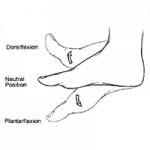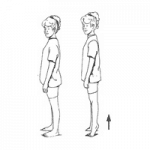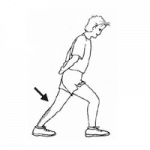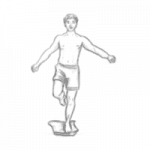Ankle Sprain
An ankle sprain is a traumatic injury where the ligaments that stabilize the joint are damaged. Depending on the degree of severity of the sprain, the ligaments are either stretched or torn. The grade of the sprain will dictate the treatment and recovery time before full recovery.
90% of sprains are inversion that is the ankle turns outward (see diagram).
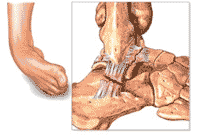
Symptoms:
Treatments:
Immediately after the event, you must follow the instructions of the “RICE” mnemonic
R: rest (no charge permitted on the limb thus move with crutches)
I: ice (15 minutes to 2 hours)
C: compression (elastic bandage or other)
E: elevation (limb higher than the level of the heart)
Consult a health care professional to take radiographs and ensure that there is no fracture involved. Bruising makes us all the more suspect a fracture of the ankle bone.
Complications:
72% of patients with ankle sprain will have residual pain during the 6 to 18 months after the event. Some patients complain pain for several years.
Relapses are very common because the ligaments lose force with the stabilization even after complete healing. About 50% of people will have a second sprain, some will repeat.
Re-education:
Athletes are strongly encouraged to rehabilitation under the close supervision of a physical therapist or a specialist in kinesiology for a faster return to the game. However, it is important to have a diagnosis and a reference by a health professional before going to therapy.
For other patients, when the physician or podiatrist has given its approval, the exercises will include: (WARNING IT IS IMPORTANT TO RESPECT HIS BODY AND LIMITATIONS IMPOSED BY THE PAIN).
Exercise 1: sitting, gently move the ankle up and down pointing the toes to your face and then to the ground.
Exercise 2: stand on one foot; raise the heel slowly put weight only on the front of the foot and the toes.
Exercise 3: stand with one leg in front of the other, bend the knee of the front leg to stretch the calf of the back leg.
Exercise 4: take support on one leg and bend the knee of the supporting leg. If the exercise is done easily, without pain, do again with a pillow.
